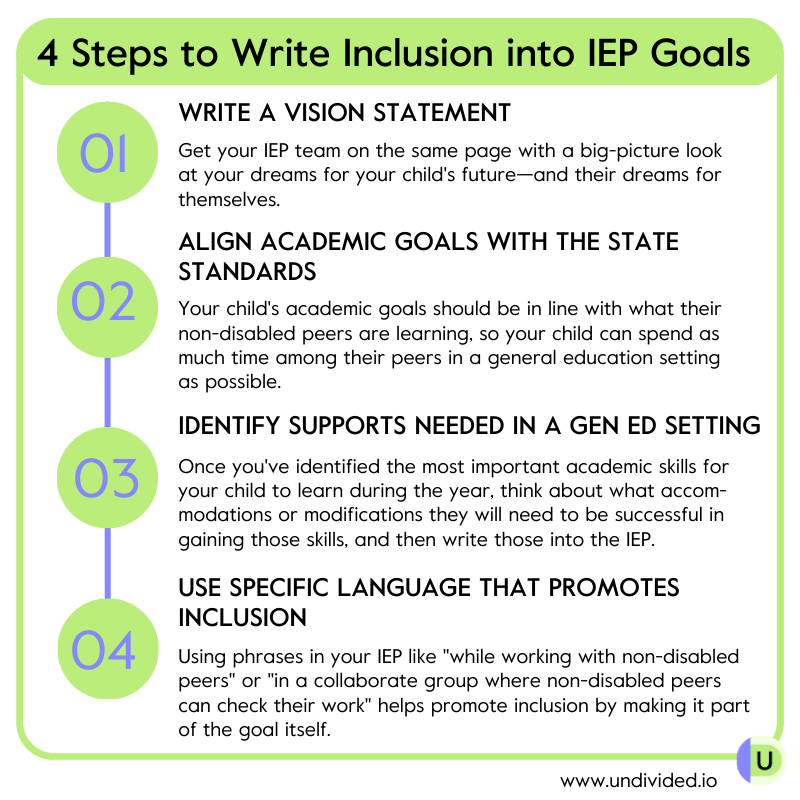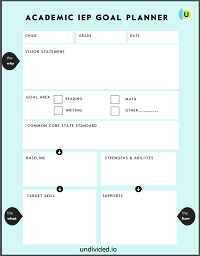4 Steps to Write Inclusion into Your IEP Goals
IEP goals drive services and placement, making them perhaps the most important part of an IEP. If you’re looking for an inclusive setting for your child, how do you know what kinds of goals will work in a general education classroom, and how do you write them in a way that will lead to that placement? We talked to Dr. Caitlin Solone, education advocate and faculty at UCLA, and she outlined four steps to write inclusive goals into an IEP. Here's what you need to know!
Step 1: Write a vision statement
Step 2: Align academic goals with the state standards
Step 3: Identify supports needed in a gen ed setting
One question that came up in the chat during our live event was from Anupama G: "If your child has never been in gen ed, how would you know if he could thrive there?" Undivided Navigator and fellow parent Iris Barker responded, "I understand you, Anupama. I asked myself the same question, and at that point, we just did not know she would thrive, so we [thought we] might as well try being included and take it from there."
Undivided's Education Advocate Lisa Carey said, "Honestly? You can’t know until you try. It is important to make sure the best possible supports are set up in advance so that your child has the best possible chance to thrive."
Step 4: Use specific language that promotes inclusion
Use a template
To help you incorporate these four steps for inclusive IEP goal writing, we've put together a template for planning academic goals. Check out the PDF here:
If you missed the event or want to review what we learned, you can watch the full recording here or listen to it on the go in this podcast episode. If you have questions about preparing for your next IEP meeting, make sure to attend our next live event to ask your question in the chat and hear from our experts and fellow parents! Keep an eye on our Facebook page to learn more.
Join for free
Save your favorite resources and access a custom Roadmap.
Get StartedAuthor




